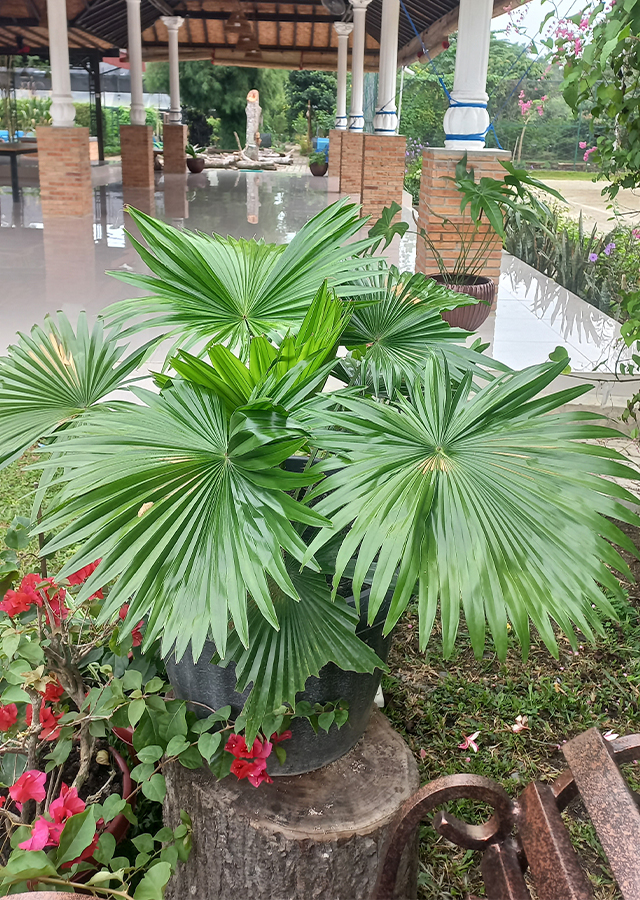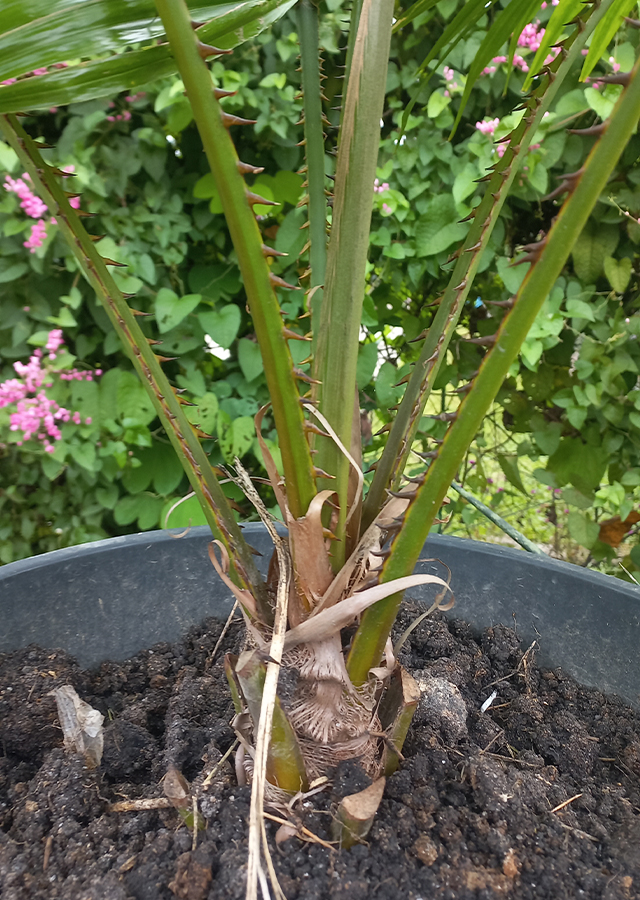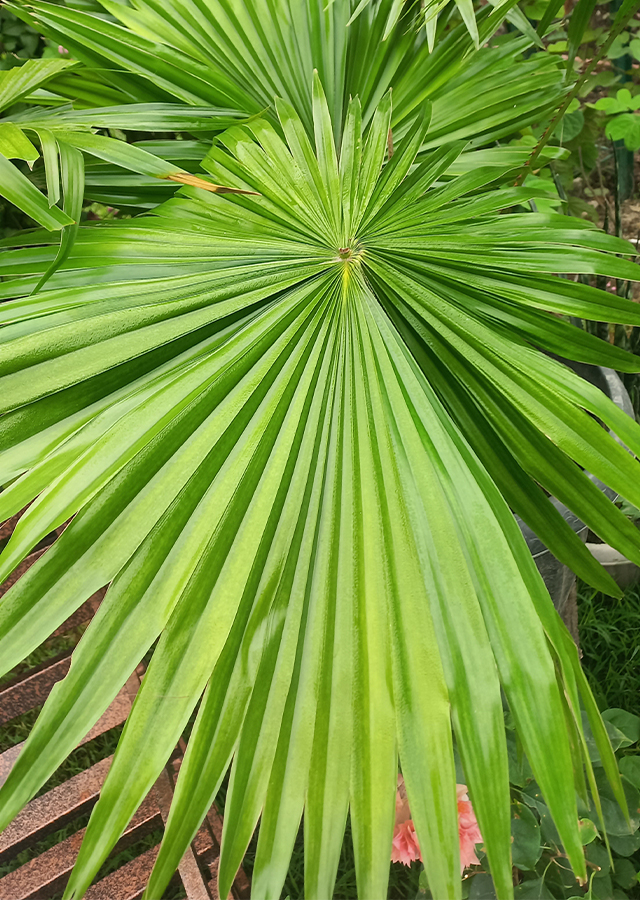Java Fan Palm
Saribus rotundifolius (Lam.) Blume
Arecaceae
Location in our garden
Palm



Synonym
Corypha rotundifolia Lam.
Licuala rotundifolia (Lam.) Blume
Livistona microcarpa Becc.
Habitus
Palm. An evergreen, solitary-stemmed palm with a stem that can be up to 45 m tall and 15 - 25 cm in diameter
Part Used
Leaves
Growing Requirements
Full Sunshine
Need Shade
Habitat
Forest
Roadside
Terrestrial
Overview
Native to Southeast Asia; Philippines, Malaysia, Indonesia, Java, Moluccas. The plant is often harvested from the wild for local use as a source of food, wood and other materials. Young plants of this and allied species are very frequently cultivated in pots or tubs in Manila and other large towns for ornamental purposes. The plant is classified as 'Least Concern' in the IUCN Red List of Threatened Species(2009).
Vernacular Names
Yuan ye pu kui (Chinese), Palmieer évantail de Java (French), Waldpalme (German), Palma parasole (Italian), Sadeng (Malay), Dronningpalmae (Norwegian), Palmere de hoja redonda (Spanish), Paam chawa (Thai).
Agroecology
Locally abundant in swampforest, seasonally dry swampforest, mangrove margins, rainforest, moist evergreen forest, along rivers and secondary forest; at elevations up to 300 m. This species can only be cultivated in tropical and subtropical climates, because it does not tolerate near zero temperatures, but for a very short time. Prefers a sunny location, but also does well in shade with some direct sunlight, but young specimens prefer partial shade. Grows well in fertile loamy soils, but can adapt to a wide variety of well-drained soils, including clay, sand, and alkaline or acidic soil pH. This species also likes a medium that is evenly moist but not consistently wet. This palms are quite resistant to damage but are not tolerant of strong winds.
Morphology
- Roots - fibrous.
- Stems - single, straight, smooth, slender with a diameter of about 20-25 cm, brown, carrying prominent leaf marks, and covered with beautiful grayish weave fibers above, below the crown. Topped by a crown of 20 - 50 leaves.
- Leaves - palmate (manjari compound leaves) arranged in a spiral, have leaf blades that are almost round like a fan, medium to large, glossy green, divided into many linear lobes, stiff, grooved, leaves become more divided with age. The spiny stalks (at the base of the lower surface in young plants) support the leaf blades, are long, and slightly curved.
- Flowers - small, yellow, bisexual. Long-stemmed inflorescence, about 0.9–1.2 m long, divided into 3 main axes containing up to 4 branches. Creamy panicles.
- Fruits - seed, small, globose to subglobose, about 11 - 25 mm in diameter with a very thin layer of flesh, the fruit is bright orange-red to red and turns black when ripe.
- Seeds - hard, brown and round.
Cultivation
- Propagated by seeds. Fresh seeds if kept warm, germinate easily within 2 months after sowing.
- Pollination of flowers is assisted by bees.
Chemical Constituents
Saponins, phlobatins, tannins, anthraquinones, cardiac glycosides, terpenes, alkaloids, flavonoids, deoxysugars, phenols.
Traditional Medicinal Uses
- Treat fresh wounds and diarrhea.
- Has activity as an antioxidant and antibacterial.
Part Used
Reference Sources
- Royal Botanic Gardens. Plants of the World Online: Saribus rotundifolius (Lam.) Blume. https://powo.science.kew.org/taxon/urn:lsid:ipni.org:names:669832-1. 29-04-22.
- Stuartxchange. 2019. Philippine Medicinal Plants: Anahaw. http://www.stuartxchange.org/Anahaw. 29-04-22.
- Tropical Plants Database, Ken Fern. 2021. Saribus rotundifolius. http://tropical.theferns.info/viewtropical.php?id=Saribus+rotundifolius. 29-04-22.
- Flora Fauna Web. 2021. Saribus rotundifolius (Lam.) Blume. https://www.nparks.gov.sg/FloraFaunaWeb/Flora/2/6/2653. 29-04-22.
- LLIFLE - Encyclopedia of living forms. 2022. The Encyclopedia of PALMS & CYCADS: Saribus rotundifolius (Lamarck) Blume. http://www.llifle.com/Encyclopedia/PALMS_AND_CYCADS/Family/Arecaceae/24542/Saribus_rotundifolius. 29-04-22.
